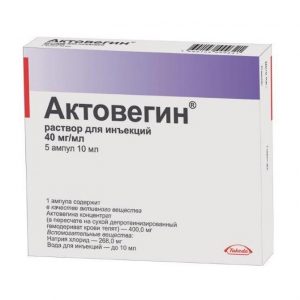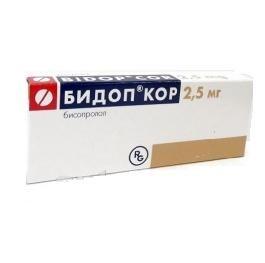Description
Release form
Intravenous solution.
Packing
5 ampoules.
Pharmacological action
Pharmacodynamics
Ebrantil refers to drugs that block postsynaptic β-1-adrenergic receptors, thereby reducing peripheral resistance. Moreover, Ebrantil regulates the central mechanism of maintaining vascular tone and has a weak -adrenergic blocking effect. Heart rate, cardiac output do not change with its introduction. Low cardiac output may increase due to decreased vascular resistance. Orthostatic phenomena, as a rule, the drug Ebrantil does not cause. It blocks vasoconstriction caused by 2 -adrenoreceptors and does not cause reflex tachycardia due to vasodilation.
The drug Ebrantil balanced reduces blood pressure and dad, reducing peripheral resistance.
Urapidil reduces pre- and afterload on the heart, increases the effectiveness of heart contraction, thereby, in the absence of arrhythmia, the drug increases the reduced cardiac output.
mechanism of action. The drug Ebrantil has central and peripheral mechanisms of action.
Primarily blocks peripheral postsynaptic 1-adrenergic receptors, i.e. the drug blocks the vasoconstrictor effect of catecholamines.
In the central nervous system, urapidil affects the activity of the vasomotor center, which is manifested in the prevention of a reflex change in the tone of the sympathetic nervous system.
Urapidil does not affect carbohydrate metabolism, uric acid metabolism and does not cause fluid retention in the body.
Pharmacokinetics of
After intravenous administration of 25 mg of urapidil, a two-phase decrease in the concentration of the drug is observed: first, a rapid decrease ( -phase), and then a slow ( -phase).
The distribution period of the drug is about 35 minutes.
Vd – 0.8 l / kg (0.6 1.2 l / kg). Most urapidil is metabolized in the liver. The main metabolite is a derivative hydroxylated in the 4th position of the benzene ring, which has practically no antihypertensive activity.
O-demethylated metabolite is formed in very small quantities and is almost as active as urapidil. 50 70% of urapidil and its metabolites (15% as an active drug) is excreted by the kidneys, the rest is excreted through the intestines as metabolites (mainly in the form of inactive para-hydroxylated urapidil).
T1 / 2 after intravenous bolus administration is 2.7 hours (1.8 3.9 hours). Binding to blood plasma proteins – 80%. A relatively low degree of binding to blood plasma proteins minimizes the likelihood of interaction of urapidil with drugs that bind strongly to blood plasma proteins.
In elderly patients, and in patients with severe hepatic and / or renal failure, Vd and urapidil clearance are reduced, and T1 / 2 is increased.
Urapidil crosses the BBB and the placental barrier.
Contraindications
hypersensitivity to the drug Ebrantil
aortic stenosis
open Botallov duct
pregnancy
lactation (efficacy and safety not established)
age 18 years.
Precautions: advanced age, impaired liver and / or kidney function, hypovolemia.
Special instructions
May be used concomitantly with other orally prescribed antihypertensive drugs.
There is no clinical data on the use of the drug in children under 18 years of age.
Composition s intravenous administration contains: active ingredient: urapidil hydrochloride 5.47 mg (corresponding to 5 mg of urapidil),
excipients: propylene glycol sodium hydrogen phosphate sodium dihydrogen phosphate dihydrate water for injection.
Side effects of
Most of the following side effects are due to a sharp drop in blood pressure, but clinical experience has shown that they disappear within a few minutes even after a drip infusion of Ebrantil. For severe side effects, discontinuation of treatment may be required.
A list of side effects with an indication of the frequency of their development is presented in the tables.
Side effects of the drug Ebrantil (solution for intravenous administration)
Organ system Frequency
Frequently (? 1: 100, Sometimes (? 1: 1000, <1: 100) Rarely (? 1: 10000, Very rarely ( From the CCC Heartbeat, tachycardia, bradycardia, chest tightness, dyspnea, arrhythmias From the gastrointestinal tract Nausea Vomiting Laboratory parameters Thrombocytopenia * From the central nervous system Dizziness, headache, fatigue Feeling of anxiety From the urinary tract Reproductive system fropatiya, nephrotic syndrome For the skin increased potootdelenieAllergicheskie reactions (pruritus, redness of the skin, exanthema) Drug Interactions The antihypertensive effect of urapidil may be enhanced when taken together with? -adrenoblockers or other antihypertensive drugs, as well as with hypovolemia (nausea, vomiting) and with ethanol. With concomitant use of cimetidine, Cmax of urapidil in blood plasma may increase by 15%. Overdose Symptoms: dizziness, orthostatic collapse, fatigue, lethargy. Treatment: with a sharp drop in blood pressure, it is necessary to raise the patient’s legs and start infusion therapy to increase the BCC. If these measures are ineffective, you can start the infusion of vasoconstrictors under the control of blood pressure. In very rare cases, iv administration of catecholamines (0.5 1 mg of epinephrine (adrenaline) diluted in 10 ml of physiological saline) is necessary. Storage conditions At a temperature not exceeding 25 ° C. Expiration 2 years. active substance Urapidil Prescription terms from pharmacies Prescription Dosage form solution for infusions Takeda GmbH, Japan




